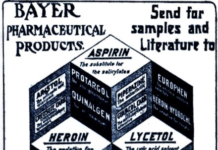 Named after the pearly deposits of fatty acid from the Greek margaritēs / márgaron meaning pearl-oyster or pearl, and margarís, meaning palm-tree, margaric acid was discovered in 1813 by chemist Michel Eugène Chevreul.
Named after the pearly deposits of fatty acid from the Greek margaritēs / márgaron meaning pearl-oyster or pearl, and margarís, meaning palm-tree, margaric acid was discovered in 1813 by chemist Michel Eugène Chevreul.
In 1869, French Emperor Louis Napoleon III offered a prize to anyone who could make a low cost substitute for butter for use by the armed forces and the lower classes. French chemist Hippolyte Mège-Mouriès invented a substance he called oleomargarine, which was shortened to the trade name “margarine”. He patented the concept in 1869 and expanded manufacturing but had little commercial success. In 1871, he sold the patent to the Dutch company Jurgens, now part of Unilever. In the same year the German pharmacist Benedict Klein from Cologne founded the first margarine factory “Benedict Klein Margarinewerke”, producing the brands Overstolz and Botteram.
Margarine is naturally white in colour, and many countries enacted laws forbidding the addition of artificial coloring agents, to protect their dairy industries. Bans on adding color became common in the United States, Australia, and Canada and some of these bans lasted for almost 100 years. It did not become legal to sell colored margarine in Australia until the 1960s. In Canada, most provinces had lifted the restriction by the 1980s, but in Ontario, it was technically illegal to sell butter-colored margarine until 1995. Quebec was the last Canadian province to regulate margarine colouring and repealed its law in July 2008. (wiki)



